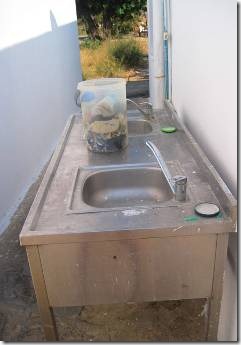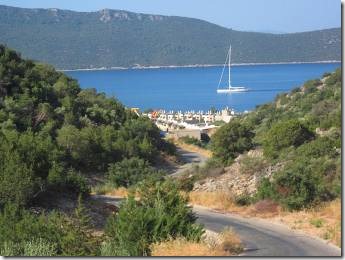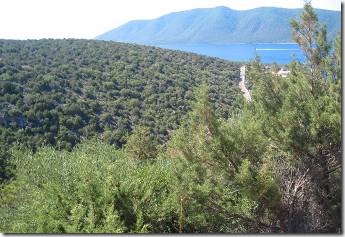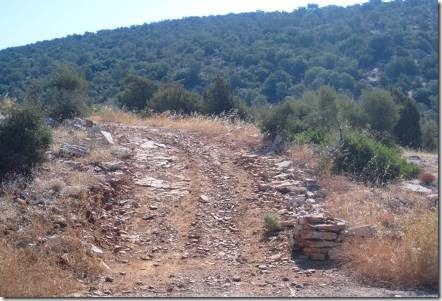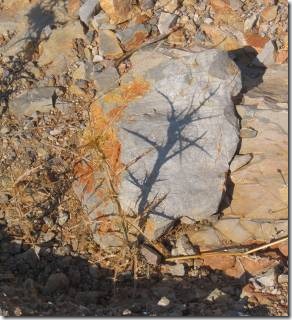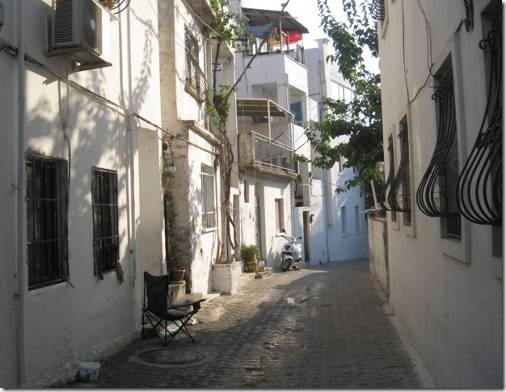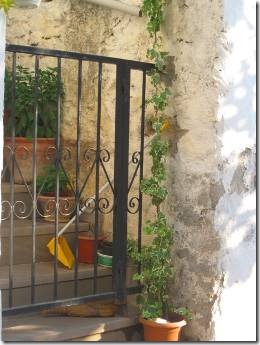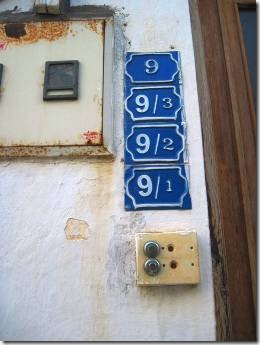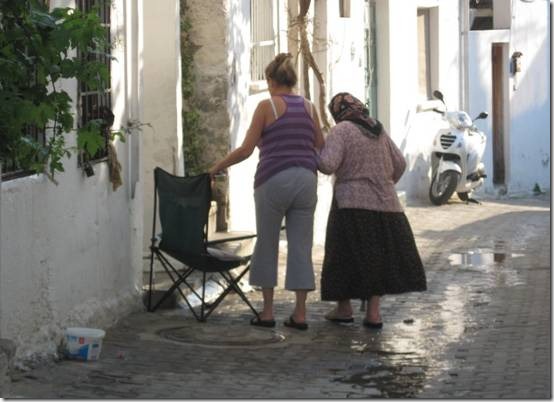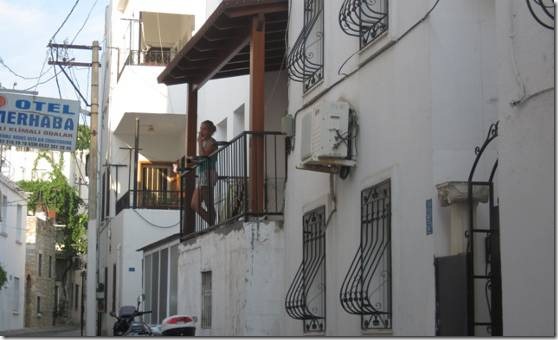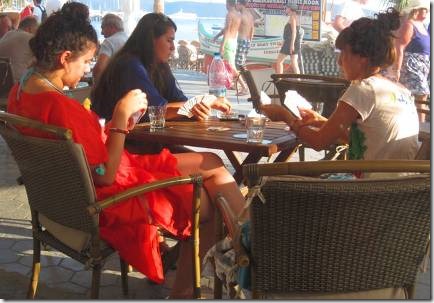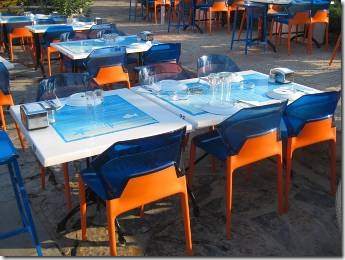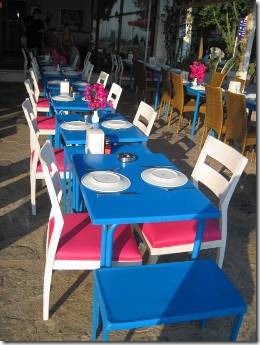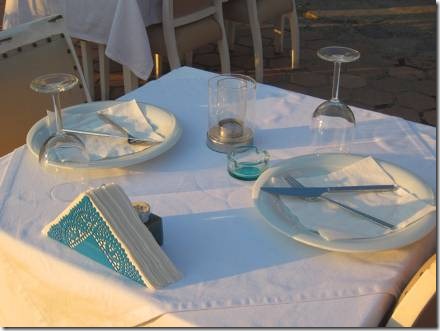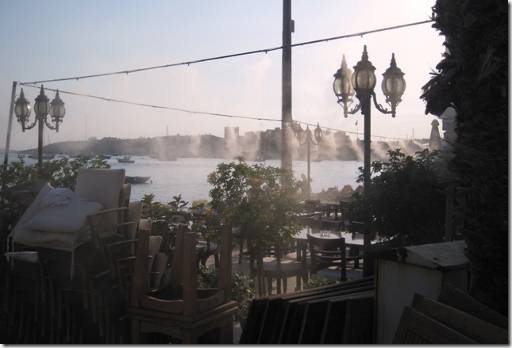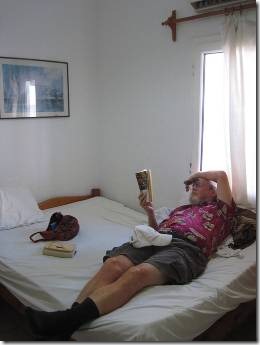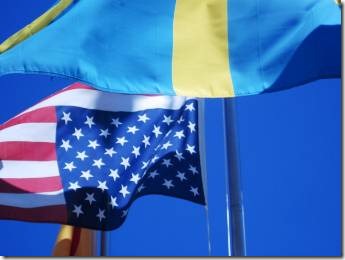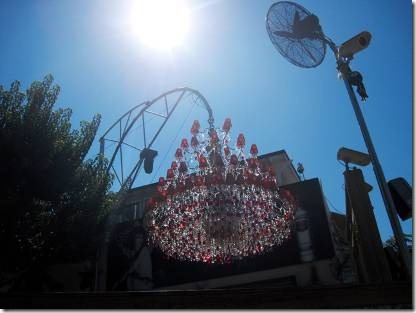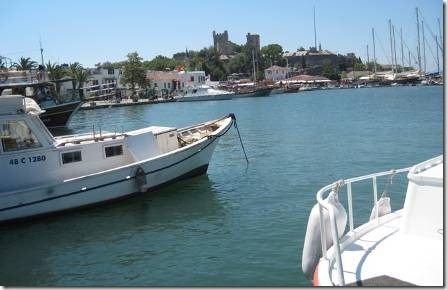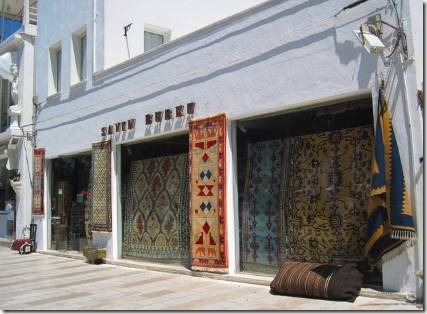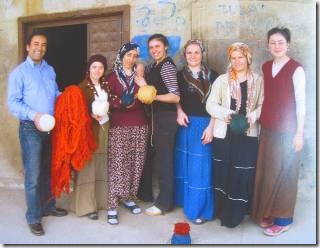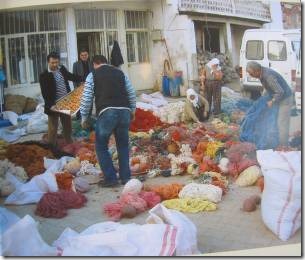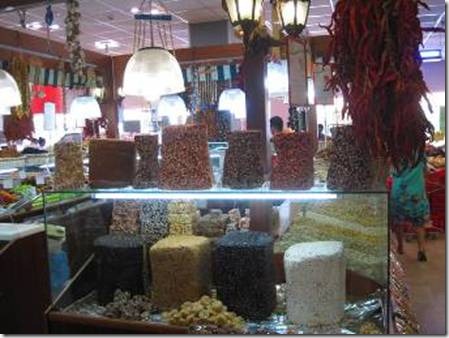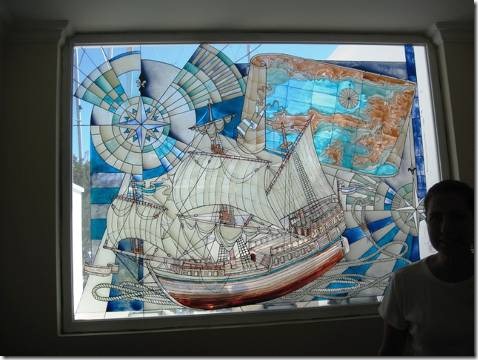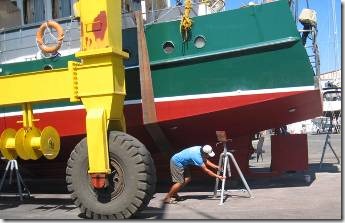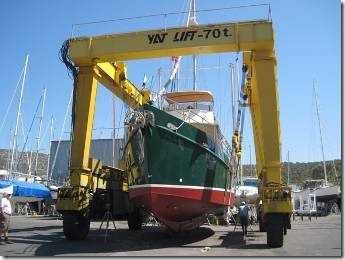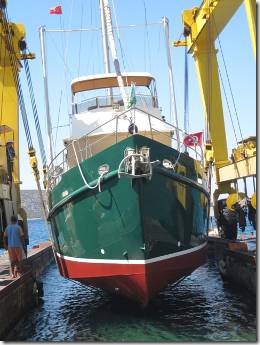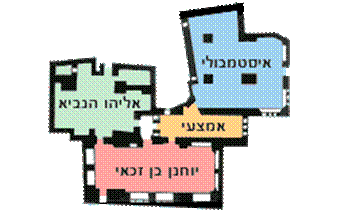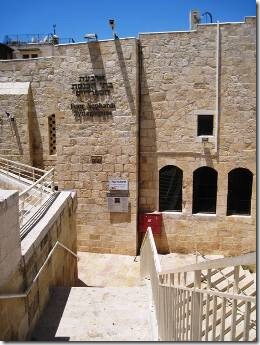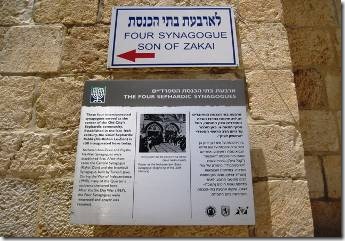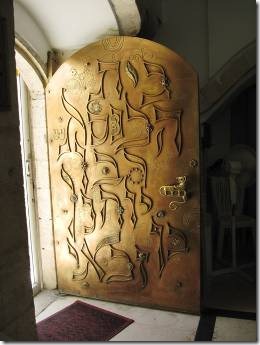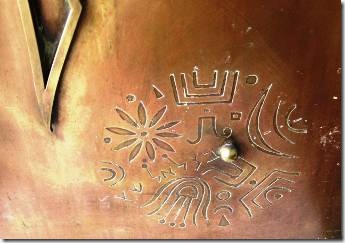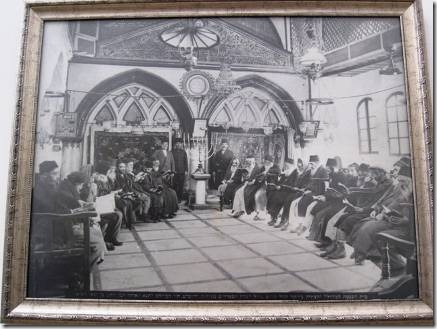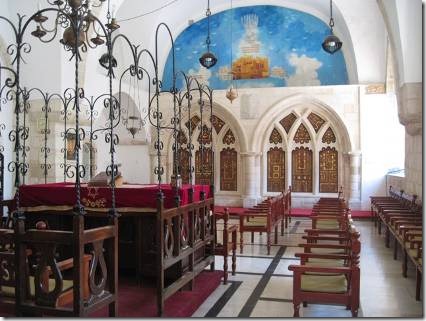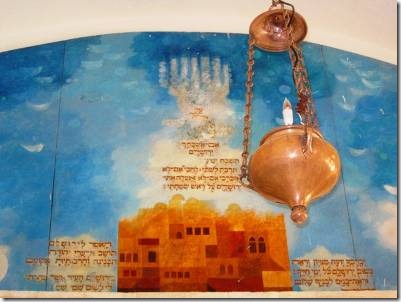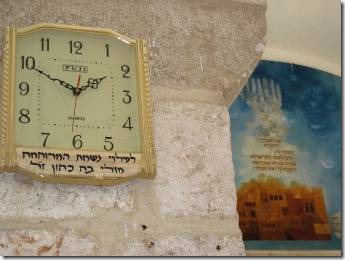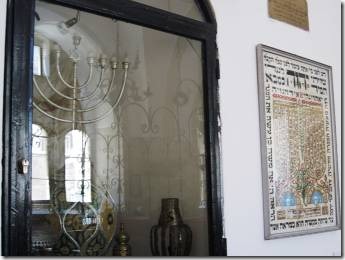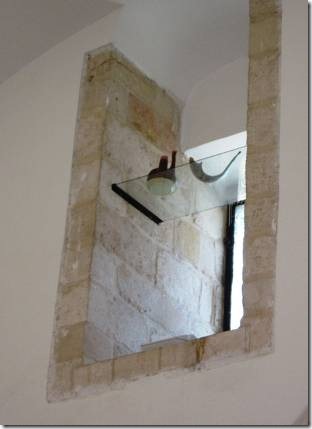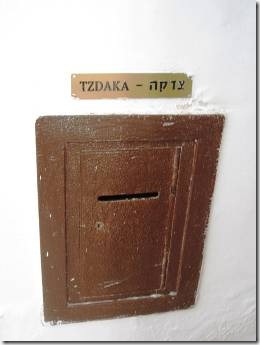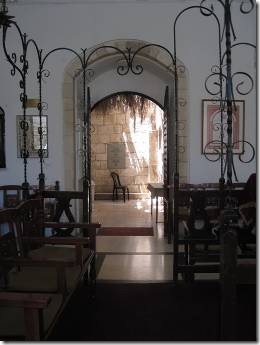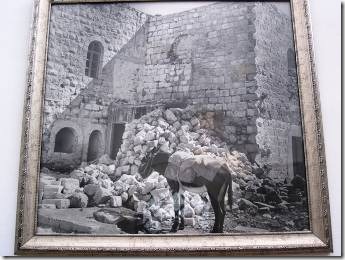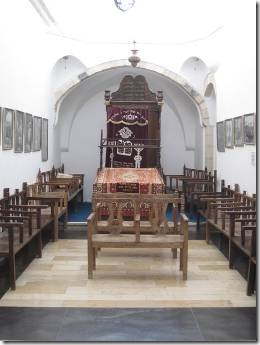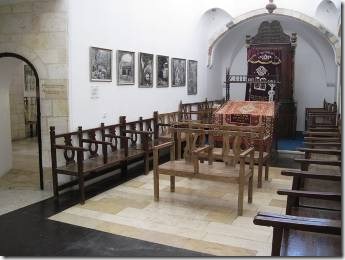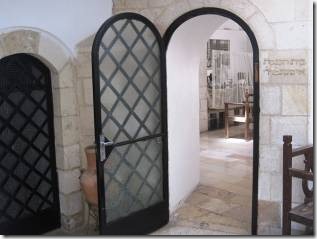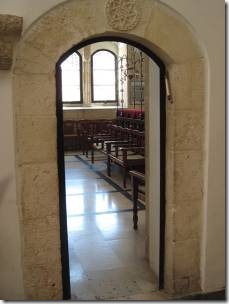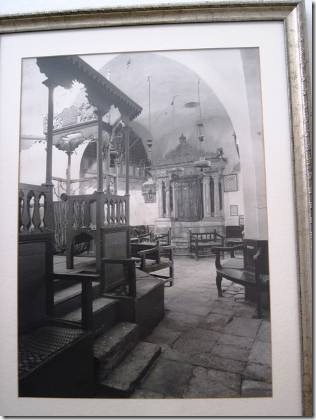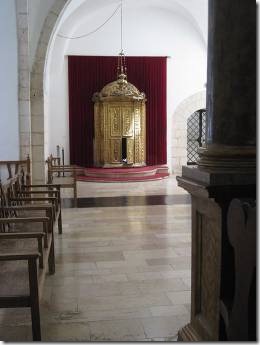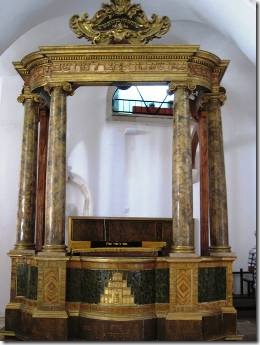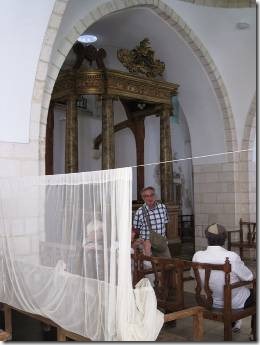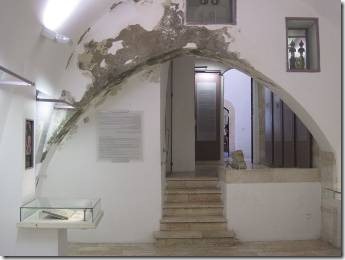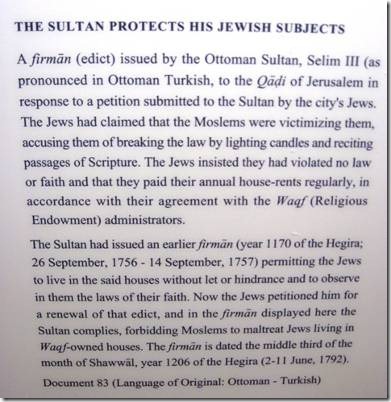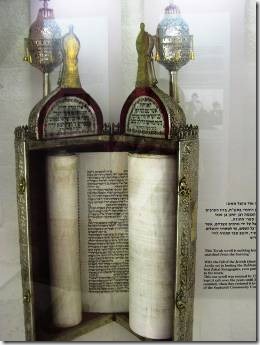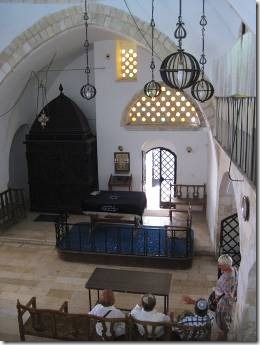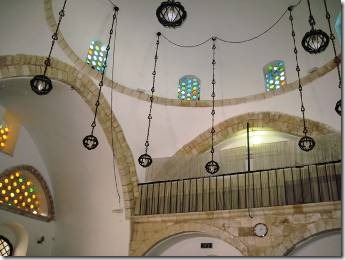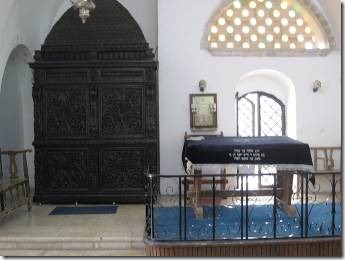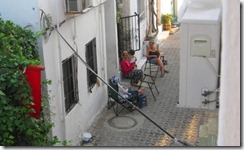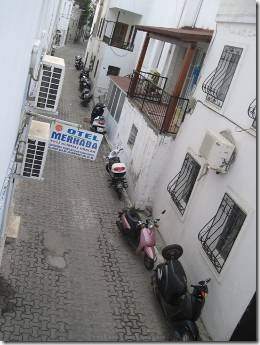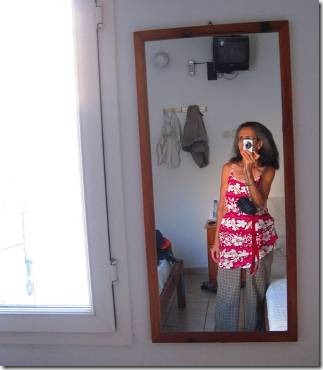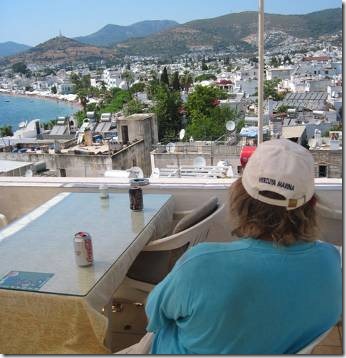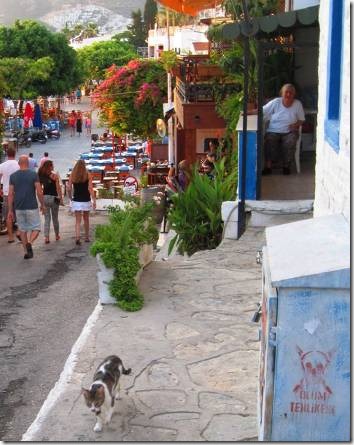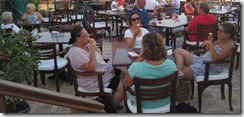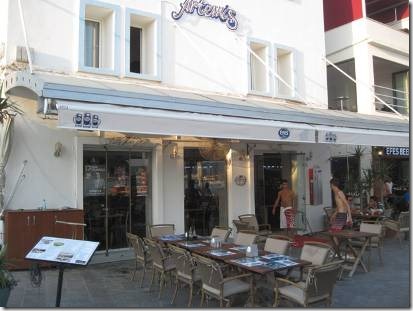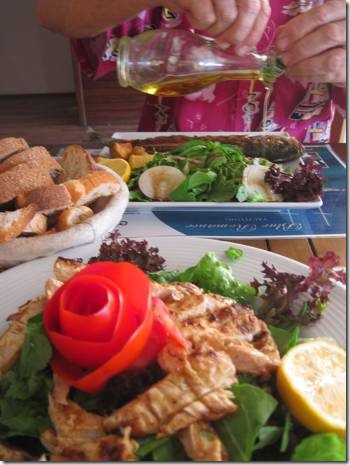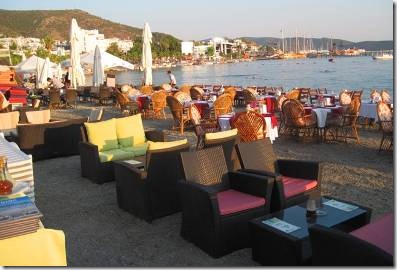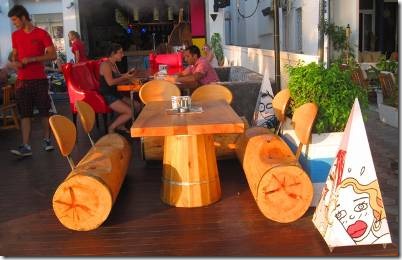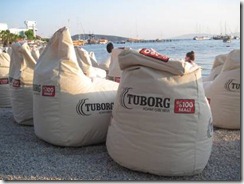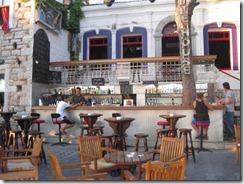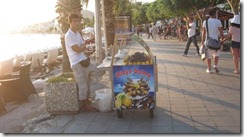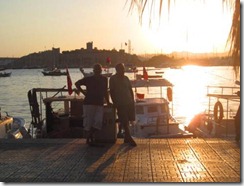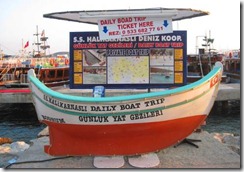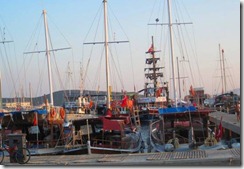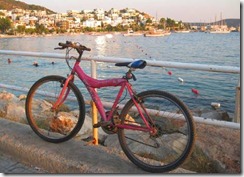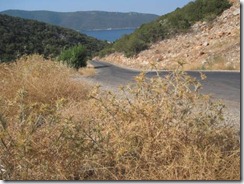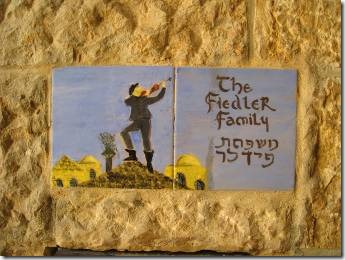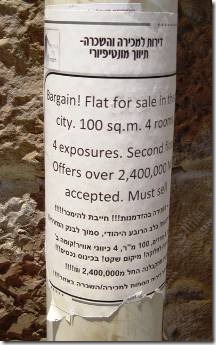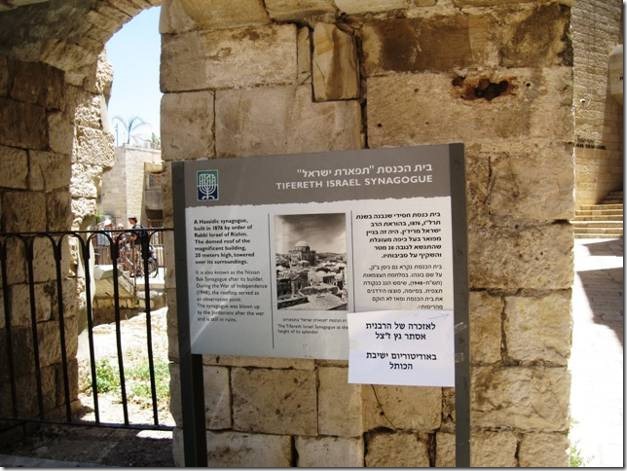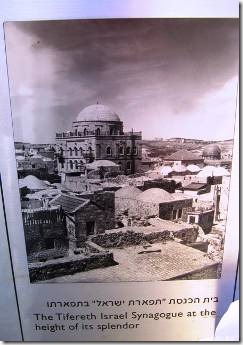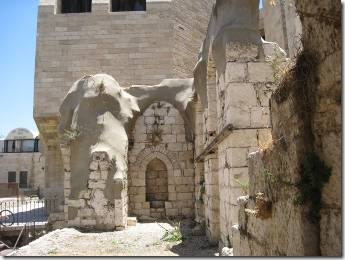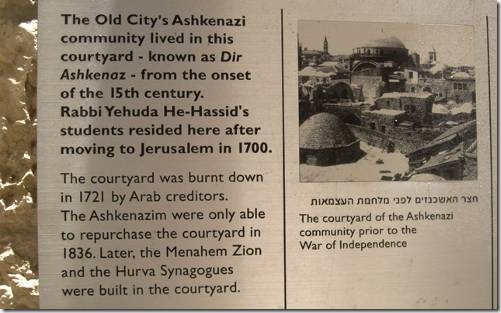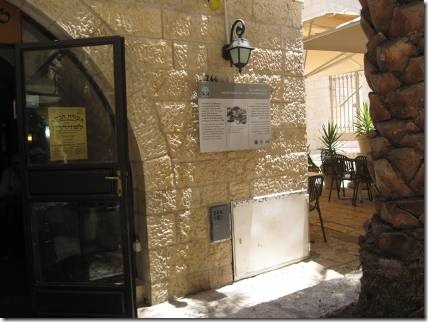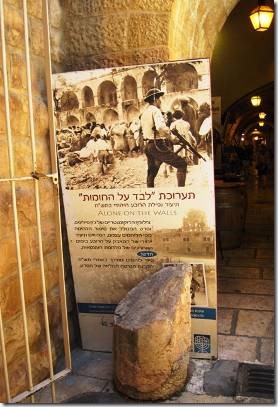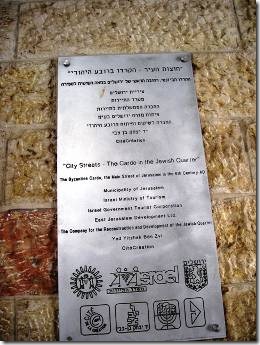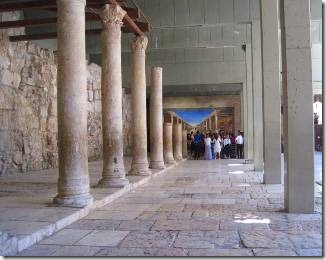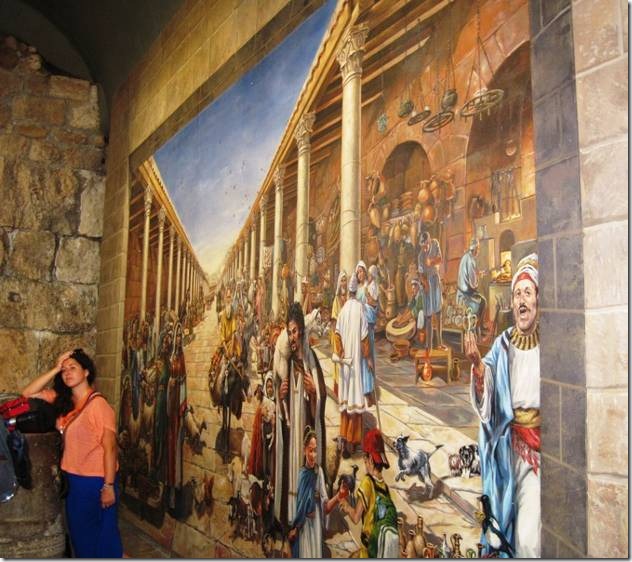Merhaba,
We are now back from Bodrum after a long, full, 24 hour passage. We were put back in the water at 11 am Monday morning. But had we started out then for Marmaris we would have arrived about 11pm, too late to do anything but anchor out and wait until morning to enter the marina. Instead we dropped anchor in Bodrum and waited around. But that was just too hot and boring so we pulled up anchor and hoped for slow speeds that would get us to Marmaris about 8 am. No such luck. Even with the throttle cut back we zoomed along at over 7 knots. By 8 pm we knew our plan wasn’t working so well so we found a bay that looked somewhat sheltered from the 24 knot winds and we went in and dropped anchor. We would wait there and rest for 4 hours, pull up anchor at 1 am and head for Marmaris planning to be there about 8 am when the marina staff would help us into a berth and before the wind would pick up. We’d had our anchor drag back in Bodrum and then again the first try in this bay. So though we really were good and stuck the second attempt, we took turn standing watch to make sure we didn’t drift back into the island behind us. Randal took the first watch from 9 until 11 and then I watched until 1 am when we pulled up anchor and were on our way. The thing about standing watch at anchor is that I could read so it wasn’t so boring. When we’re moving there is too much movement to read and too much to watch so reading isn’t such a good idea. I know people who listen to audio books or can read, but we haven’t had smooth enough crossings of late to make reading possible. I do read during the day unless we’re really rolling and then even I get queasy looking at print. As it happened, beware of what you wish for…those earlier wishes for slower speed caught up with us when we didn’t want them, the wind increased and we bounced our way towards Marmaris averaging less than 5 knots for too many hours. There was a full moon so that was nice and by sunrise, my watch was from 4 am to 7 am, I was wide awake enough to let Randal sleep until 9 am. We finally arrived in Marmaris Bay and though it was still windy, the bay helped as did the marina walls so we got into our berth without incident with the help of the marinaros. Marinaros are the men in the small, powerful dinghies who lead you to a berth, push the bow and stern around with their dinghy, hold you in place and then handle your lines on shore and hook you up to the bow line. Good guys.
Ru
Randal, from a habit developed during his Roanoke Wreck Repair days, always gets to work before the “workers.” Our cruising lifestyle hasn’t changed that. So every morning we left our pension room by 7:30, an hour before the traditional Turkish breakfast was served. When we got to the boat yard I made our traditional breakfast. Randal eats Raisin Bran with skim milk and sliced banana and I have oatmeal with yogurt; just as we do where ever we are. Randal turns on his computer first thing. After I get our breakfast, I check email and baseball scores. Not a good year to be checking baseball scores if you are a Red Sox fan. After that I would go for a walk in the hills behind the boat yard. I could have taken a dolmus into town, or even walked for that matter as it was just a little over 2 miles. The point of being in Bodrum is to be in town seeing the sites or shopping, laying out at the beach or buying a ticket for one of the charter boats that cruise around the bays. At least that’s the point if you’re in Bodrum on “vacation.” And though Randal and I are on one long permanent vacation, we had work to do. Randal “supervised” and at times lent a hand to DoraMac’s bottom job and I had a load of hand wash to do every day along with the few dishes we would use. Cleaning the inside of the boat was pointless as particles from the sanding process and just general dust was inescapable as all of the portholes, hatches and doors had to remain open or the temperature in the boat would have been well over 100. Yat Lift had great wifi! I was able to research my blog mails and also download a bunch of books to my Kindle. My sister forwarded me Amazon deals and other suggestions. Lots of choices for less than $4.00 per title and most are actually free which makes you wonder about who makes money from books these days. I can also borrow books for free from my library at home and have done so in the past. Unfortunately my taste in books doesn’t seem to match what’s available to libraries electronically as some publishers won’t allow libraries the use of electronic titles. Too bad; hopefully that will change. But from a reluctant Kindle user, I am now quite the fan or the media and am almost as happy reading from my Kindle as from a paper book. My Kindle is the middle model so does pictures, but not really well which is too bad but okay for now. I still am looking forward to our time at home when I can borrow tons of books from the Roanoke Valley Libraries. Nothing electronic will ever replace libraries and librarians. And you can take that comment to the bank. As for the Red Sox….one can only hope.
This email is some last photos of our visit to Bodrum……..
Laundry facilities….
I am spoiled by having a washing machine on DoraMac. For most of our cruising friends, hand washing and local laundry facilities, are part of their cruising life. The problem isn’t even washing. Rinsing takes tons of water and then wringing is about impossible. I remember watching the women in Cochin, India slap their laundry on a huge wood stump. Probably works as well as a washing machine. And maybe gets some of the water out too, but nothing beats the spin cycle on our tiny washing machine. It may not clean so great, but it does spin really well. As it was truly hot, and the sun beat down all day, even Randal’s cut off jeans shorts, hung up dripping wet mid-morning were dry by late afternoon.
My daily walk
Funny what perspective will do.
The sailboat looks 10 time larger than the resort buildings and it looks as if the sea is higher than the roof tops.
One day I hiked to the end of that road off in the distance.
Not so far as it looks; but all up and down hill.
My sitting place on the rocks at the foot of this hillside driveway.
It would take me about 30 minutes to walk here but then I would continue past and down the next hill until time or tiredness made me return back here to “my spot.” It was quiet enough to hear the breezes. There were crickets, distant bells, and only the noise that comes when industry is far away. Up the driveway were two domestic buildings, one a home. Often there was a car, but I never saw any people. One day I saw a horse. I could have sat there for hours, but there was work to be done on the boat. And though I could sit and stare into space for hours in elementary school, now I don’t have the patience. Or the imagination perhaps.
Even this shadow could prick your finger.
In town……
I also loved the evening quiet on our street.
If life always looked like this it would be okay with me.
Ladies of Akasya Sokak, Kumbaçhe Mah (Our street in Bodrum.)
Babies to the “ancient” lived together in the neighborhood.
A “smoke” out on the balcony.
And on Restaurant Row…..
Spying on the tourists.. . Ladies who eat ice cream, smile. Ladies who play cards and smoke cigarettes, are very serious.
We ate dinner at the same window table in the same restaurant every night (except for one time, because we’d had a huge late lunch at the yard, we had PB and J in our room.) Randal ordered the grilled sea bass every night. People staying in the hotel would sit in the tables outside oblivious to our people watching them. I started to recognize some of them as each night we saw them come from the beach to retrieve their room keys.
Who would have thought orange plastic could look so good…and pink and blue.
Perfect seaside dining.
(Our dinners were eaten indoors with AC and paper place mats advertising something I should remember, but don’t.)
This cooling mist looks like fog. The Bodrum Castle is ghostlike in the distance.
Reading
Most afternoons we’d head back to our pension room about 5 pm. We’d relax and read for about an hour or so. Then we would shower and go have dinner, walk a bit, return to our room and read. Happiness is having a good book to read…and a best friend to read next to you. Of course we did fight over the pillows.
This photo is right side up: it was our flag that was upside down.
Amazingly this was the “first upside down flag” we saw Sunday morning. Randal and I took Sunday to do some touring. We went off on our motorbike in search of the covered market. We passed a fairly large hotel and I noticed the flag was upside down so we U-turned and I went inside to tell them. While they were apologizing and explaining that a “technician” had been called to fix it, Randal was outside in the parking lot actually fixing the flag. Once a Marine, always a Marine. Later, in town, we passed a restaurant displaying small flags of several countries. Ours again was upside down! So Randal fixed that one too.
The giant chandelier that amazed me last year still amazes me.
Bodrum Harbor with the Castle in the distance.
We tried to visit the Castle which houses a museum of underwater archaeology, but we got there at noon as it was closing for the lunch hour. It was just too hot to wait around so we put it on our “to do” list for the next time we visit Bodrum. We will be here for a year so there still might be a chance.
I couldn’t resist one of the tiny watercolors from this shop.
Randal is still searching for that perfect (and perfectly priced) Turkish carpet.
If you are interested in Turkish carpets, visit the website from this shop. Last time we visited we learned quite a bit and this time too as the owner Sayin Burku really tried to teach us about carpets. According to his website Bette Midler is one of his clients. So are several people with Sheik before their name.
These photos of Sayin Burku and his weavers are from the booklet he gave us. Lots more photos are on his website.
A scene from a Carfour Express in Bodrum where we stopped for less exotic staples such as cucumber and tomatoes for our passage back to Marmaris.
The beautiful painted window in the Yat Lift office and in shadow, Nurten.
Nurten worked in the office. She spoke English to us, French to the French cruisers, Turkish to the local workers and who knows what other languages. Very impressive, woman and window.
Photos of us going back into the water. It would be easy to confuse the coming out with the going in except for the beautiful bottom paint you can now see where before it was pretty grungy.
Once the lift straps were in place, removing the tiny stands that look too impossibly small to hold up a 34 ton boat. But those straps look pretty puny too, except in real live they are rather larger looking. The stands look as puny in real life as they do in the photo.
Rolling back to the travel lift slip and being lowered back into the water. Randal then had to reattach our front sail. When that was finished, the men threw us our lines and off we went…to drop our anchor and wait. We’d asked to be put into the water later, but 11 am was the only time their schedule would allow for it. So that was that.
The End.

